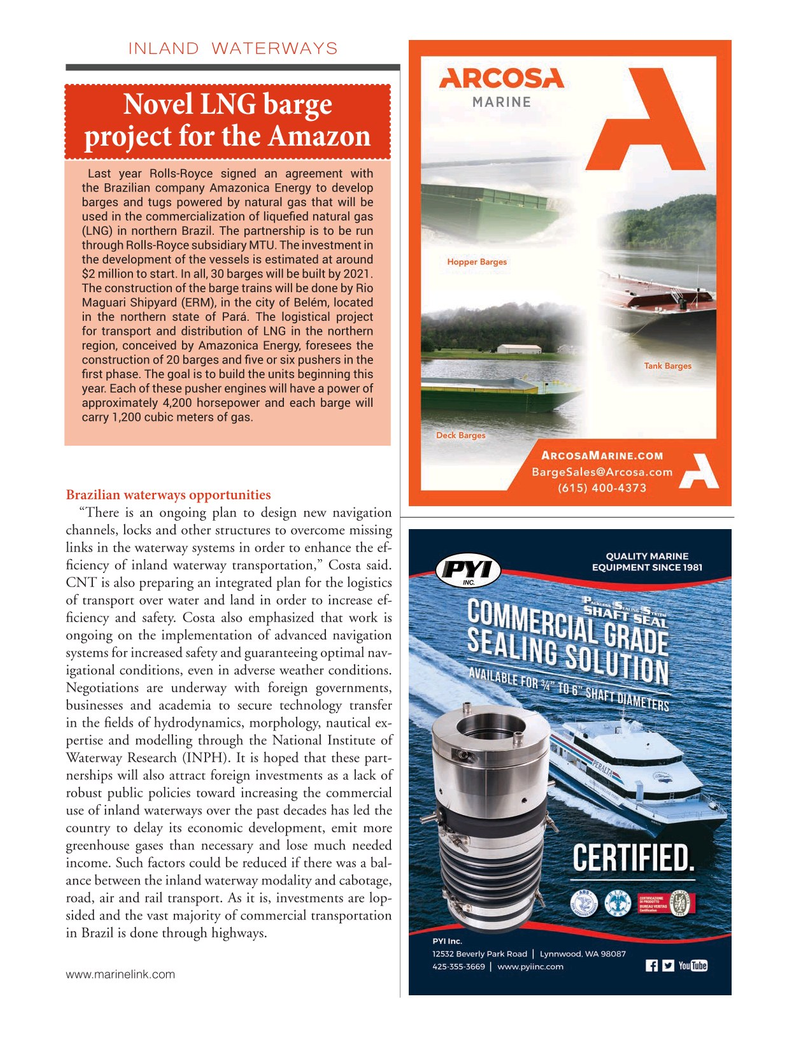
Page 51: of Marine News Magazine (November 2020)
Workboat Annual
Read this page in Pdf, Flash or Html5 edition of November 2020 Marine News Magazine
INLAND WATERWAYS
Novel LNG barge project for the Amazon
Last year Rolls-Royce signed an agreement with the Brazilian company Amazonica Energy to develop barges and tugs powered by natural gas that will be used in the commercialization of lique? ed natural gas (LNG) in northern Brazil. The partnership is to be run through Rolls-Royce subsidiary MTU. The investment in the development of the vessels is estimated at around $2 million to start. In all, 30 barges will be built by 2021.
The construction of the barge trains will be done by Rio
Maguari Shipyard (ERM), in the city of Belém, located in the northern state of Pará. The logistical project for transport and distribution of LNG in the northern region, conceived by Amazonica Energy, foresees the construction of 20 barges and ? ve or six pushers in the ? rst phase. The goal is to build the units beginning this year. Each of these pusher engines will have a power of approximately 4,200 horsepower and each barge will carry 1,200 cubic meters of gas.
Brazilian waterways opportunities “There is an ongoing plan to design new navigation channels, locks and other structures to overcome missing links in the waterway systems in order to enhance the ef- ? ciency of inland waterway transportation,” Costa said.
CNT is also preparing an integrated plan for the logistics of transport over water and land in order to increase ef- ? ciency and safety. Costa also emphasized that work is ongoing on the implementation of advanced navigation systems for increased safety and guaranteeing optimal nav- igational conditions, even in adverse weather conditions.
Negotiations are underway with foreign governments, businesses and academia to secure technology transfer in the ? elds of hydrodynamics, morphology, nautical ex- pertise and modelling through the National Institute of
Waterway Research (INPH). It is hoped that these part- nerships will also attract foreign investments as a lack of robust public policies toward increasing the commercial use of inland waterways over the past decades has led the country to delay its economic development, emit more greenhouse gases than necessary and lose much needed income. Such factors could be reduced if there was a bal- ance between the inland waterway modality and cabotage, road, air and rail transport. As it is, investments are lop- sided and the vast majority of commercial transportation in Brazil is done through highways.
www.marinelink.com

 50
50

 52
52
